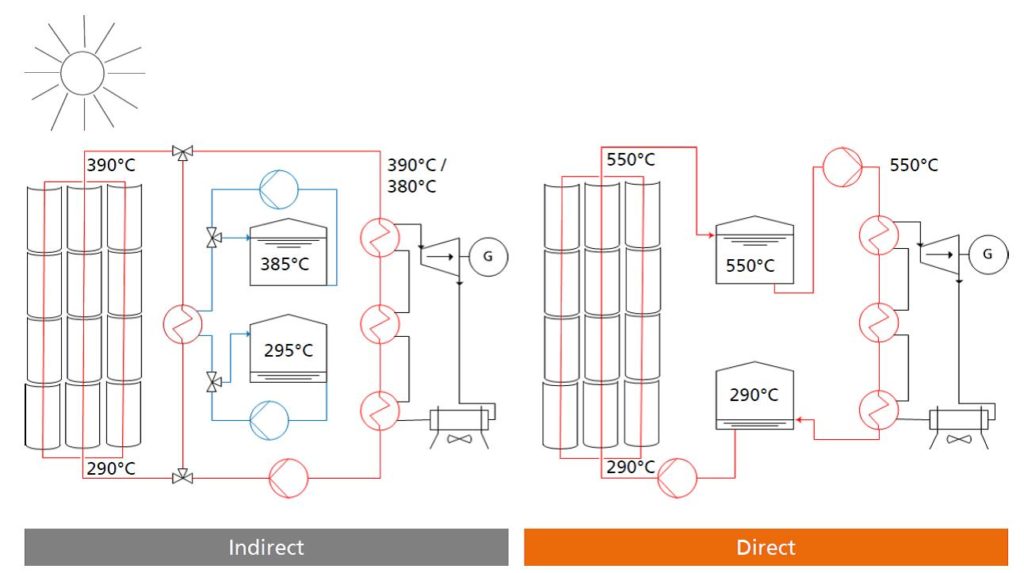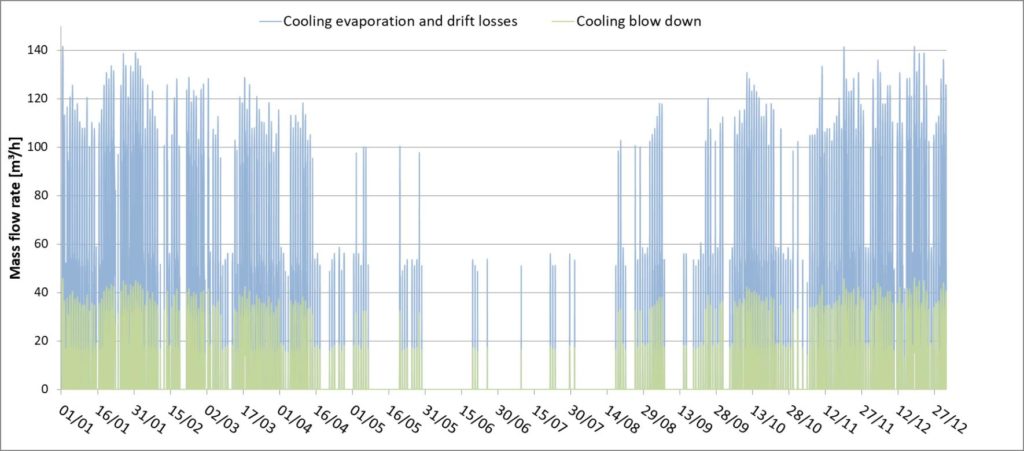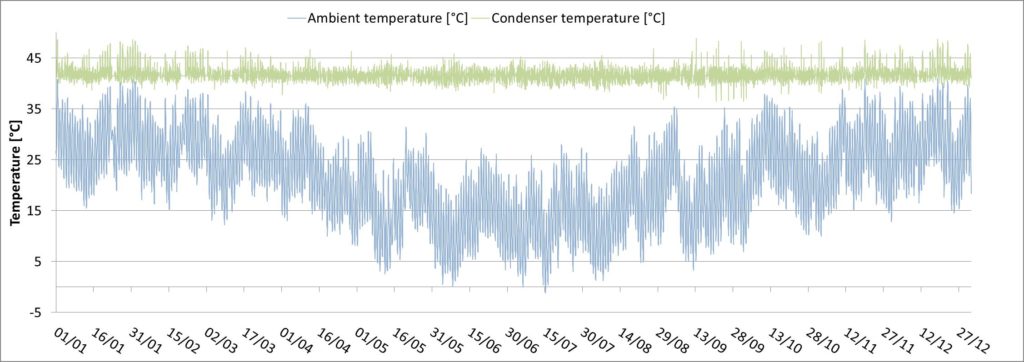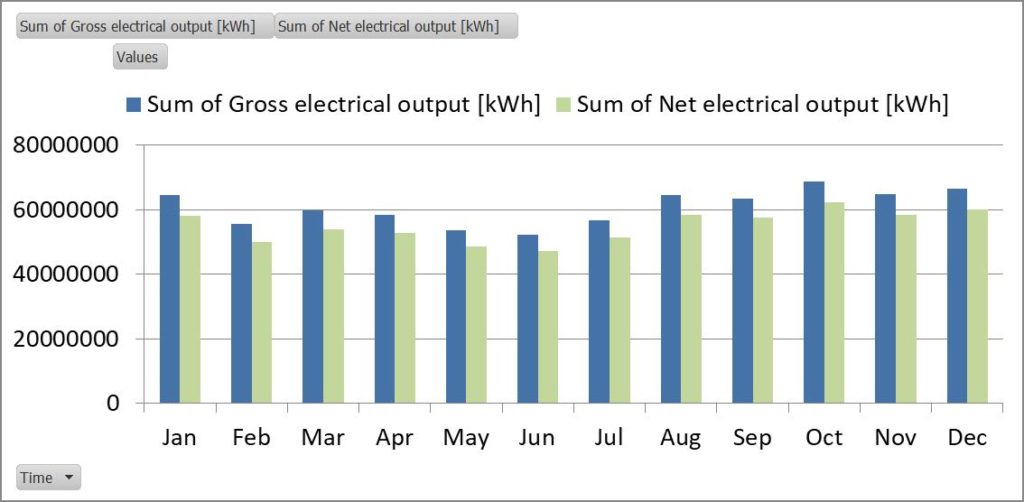ColSimCSP is a simulation software tool developed at Fraunhofer ISE for dynamic thermal simulations which allows the integration of complex operating strategies.
The performance models are based on the two plant layouts namely the indirect integration of the molten salt storage with thermal oil as heat transfer fluid which is used with PTC and LFC technologies, as well as, the direct storage with molten salt as heat transfer and storage fluid which is used with CRS and PTC technologies. The following schematic shows the implemented CSP plant configurations and their temperature level.

Figure 1: Schematic of the implemented CSP performance models in ColSimCSP (copyright: Fraunhofer ISE)
In MinWaterCSP, ColSimCSP has been further developed and expanded in order to allow for the complete modeling of water flows within the CSP system. Not only the water consumption itself but also the water quality (Total Dissolved Solid – TDS), and the energy required to supply and treat the water have been modelled. The following gives a list of relevant water streams:
- Water for mirror cleaning
- Make-up water streams
- Blow-down water streams
- Cooling water
- Wastewater stream to the evaporation pond
- Other water consumers
Additionally, detailed performance models for different cooling system technologies were added to the software. These include the direct deluged condenser and the conventional air and water cooled condensers (ACC and WCC). The cooling system models are able to simulate the condenser pressure and temperature in full load and part load operation modes, as well as, the water losses including evaporation, blowdown, and drift. Following figures show the exemplary annual simulation results of ColSimCSP for a 100 MW reference CSP plant in Upington, South Africa.

Figure 2: The water consumption of the hybrid cooling system depends on the number of operating water cooled units (deluged) (copyright: Fraunhofer ISE)

Figure 3: Number of operating dry and deluged cells depend on the load and the ambient temperature (copyright: Fraunhofer ISE)

Figure 4: The integration of the deluged cells makes the condenser temperature and pressure less sensitive to the ambient dry bulb temperature (copyright: Fraunhofer ISE)

Figure 5: Simulated monthly water consumption profile (copyright: Fraunhofer ISE)

Figure 6: The hybrid cooling system enables the power generation with high efficiency during summer months (copyright: Fraunhofer ISE)
The performance models have been partly validated against measured data of commercial large scale CSP plants. The result of the validation has been published in Solar Energy journal (Rohani et al., 2017) and is available to download under this link: https://bit.ly/2C54jF2. Since the validation is performed against a wide range of real operating data from a variety of months and days with different weather conditions, the models can be used for annual yield assessment, technology evaluation, and optimisation of operating strategies for a variety of locations and weather conditions.
Author: Shahab Rohani, Fraunhofer ISE, Germany
About Fraunhofer ISE
Fraunhofer is Europe’s largest solar energy research institution. In the solar thermal field, Fraunhofer ISE is pursuing R&D on materials research and component development for both improved flat-plate and concentrating collectors since about 15 years, but also on process integration and systems.
Follow MinWaterCSP
Newsletter subscription: http://www.minwatercsp.com/newsletter-subscription/
Twitter: https://twitter.com/MinWaterCSP
LinkedIn profile: LinkedIn





